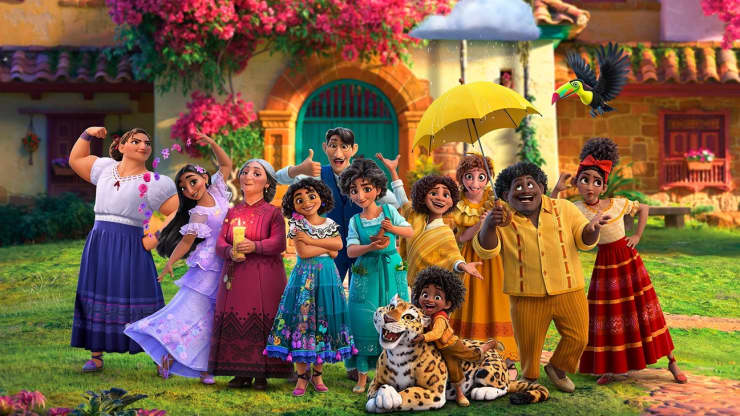
‘Encanto’ Rejects Harmful Stereotypes and Embraces Authenticity
By Michelle Marie Rodriguez
Cover Photo Credit: Disney
Latinx people are continuously misrepresented in television and film. Disney’s Encanto rejects those misrepresentations and celebrates the authenticity of Colombian culture, challenging media makers to tell Latinx stories with dignity and truth.
If we look at films and television shows that represent Colombia, we see plotlines that emphasize criminality and violence. Take a look at Netflix. You’ll see several shows dedicated to Colombian drug lord Pablo Escobar, a figure who does not represent the majority of Colombian people.
This type of misrepresentation extends to other Latinx communities as well. A recent study shows that Hispanics and Latinos are often typecast in roles that involve criminality, poverty, or immigration. Additionally, more than one-third of lead Hispanic and Latino actors in 2019’s biggest movies were depicted as criminals.
We have to ask ourselves, what kind of picture does this paint of Latinx people for non-Latinx people, and how does this impact the ideas and self-esteem of Latinx youth?
From my personal experience as a Cubana, I can tell you that most people I meet get their ideas about Cubans from Scarface, the 1980’s film starring Al Pacino, who plays a violent Cuban drug lord.
Most times, when I tell people I’m Cuban, they respond with, “Yeahhhh, Cuban! SAY ELLO TO MY LIL’ FRIEND!!!”
It wasn’t until Lin Manuel Miranda’s release of In The Heights in 2008 that I saw my culture celebrated in a way that was light, vibrant (even funny!) for the first time. Later in life, I discovered One Day at a Time, the comedy-drama about a Cuban-American family living in LA.
I thought, “Oh wow, they’re talking about Havana! Look, they’re making cafecito the same way my Abuela makes it! My papí taught me those same values. I love that Celia Cruz song!”
I felt seen, and that’s what made me love Encanto. We see Colombian culture recognized for its beauty.
The movie shows us classic food like buñuelos made by the protagonist’s mother, whose food has magical healing powers. Hollywood often neglects the beauty of natural Black hair and dark skin tones, but in Encanto, that diversity is embraced. The Madrigals’ hacienda-style home is tucked away in the beauty of what appears to be the Andes Mountains. And, of course, family and unity are at the core of the film.
Although the Madrigals may not represent every Colombian family, many moments reflect the beauty of Latinx cultures, such as family, food, and life in vivid color.
To me, this is a step in the right direction for a major media company like Disney that has a history of constantly misrepresenting or under-representing Black, Indigenous, and persons of color.
After watching Encanto, I feel a little more hopeful. I’m hopeful that the film will inspire non-Latinx people to learn more about Latinx culture, that Latinx youth will feel joy when they see themselves reflected on the screen, and that media makers will begin to tell Latinx stories with authenticity and dignity.
Watch our full take in the video below:
